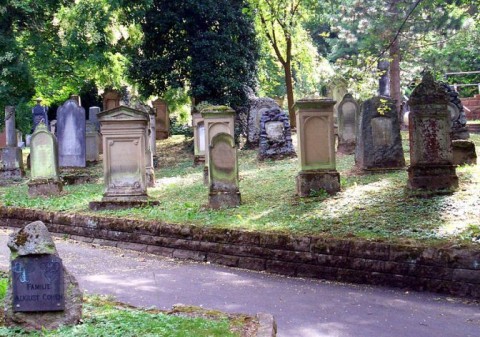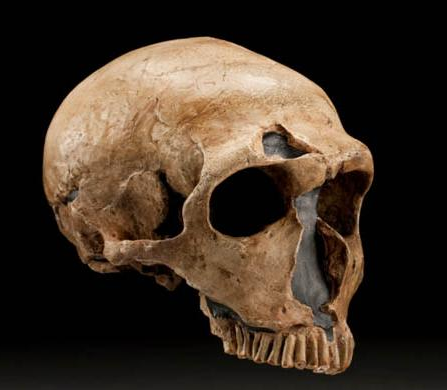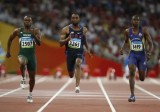Cycling P’tit Train du Nord in Linear Park
For those looking to explore some of

For those looking to explore some of

At the suggestion of another of my fellow Klat writers, I decided that instead of doing my typical movie series review this week, I would present a list of some movies that I feel are timeless. And though this list is far from being a complete picture of all the films that I can personally watch over and over and over, it does attempt to at least bring to the table ten flicks that never get old. You may agree with me, you may not and, if you’ve been locked in the basement most of your life, you may have actually not seen some of these (I suggest you remedy that immediately!). But whatever your own opinion, mine is that these are films that will never get old, carrying on from one generation to the next to become forever part of movie history, for better or for worse. Enjoy.

The purpose of a vacation is usually to get away from the mundane of the day-to-day and enjoy your life, but sometimes the most enjoyable things can be found in the beauty of death. I’m not talking about dropping dead, of course. What I am speaking of are the many cemeteries across the world that are, due to humanity’s desire to explain the end of our lives, collections of art. Many people don’t feel comfortable in the places of the dead, but you might be surprised as what treasures await. Since the beginning of time memorials have been made to express that mix of the beauty of a person

One of my favorite science-fiction/horror flicks when I was a kid was Alien. Luckily for me, I had a father who was more concerned with me not seeing naked boobies than with me not seeing alien monsters devouring people, so I was able to watch these amazing flicks while they were still in theaters (from Aliens on, anyways; I was way too young to see the first one). This Ridley Scott-created masterpiece franchise had a large role in forming my young imagination, allowing me to think of crazy alien monsters from other worlds, so foreign and difficult to understand that we, as

As you descend into the Missouri River valley going west on U.S. Highway 14, a city creeps over the bluffs. You have entered Pierre, South Dakota’s state capitol city.
A recent study offers new insight into the differences in brain organization between Neanderthals and modern-day humans. The research suggests that Neanderthals may have become extinct due to their large eyes. The larger eyes resulted in more of their brain activity being devoted to seeing in the dark. This, unfortunately, came at the expense of higher-level functioning.

.
Spectator with an intruiging 3-parter about Peguero's intrigue. We were so happy with his series that we wanted to kick Spectator's excellent can down the playground a little ways.
Hold it - that didn't come out quite right -
.
Spec outlines 4x kinds of power hitters for us and asks, "Into which sector do we put Carlos Peguero?" We're flattered that amigos are applying our ... um, James' ... habit of sorting players into templates. But let's kick that excellent can down the road by proposing a 5th template.
.
There's a cool article here that offers, admiringly,
In 2011, the Giants scored 570 runs. They finished with a wRC+ of 87, the fourth worst mark in baseball. Put simply, the Giants couldn’t hit, and their best hitter — Carlos Beltran — was a free agent.
The Giants didn’t re-sign him ... in fact, they didn’t sign anyone of note last winter. ... they traded for Angel Pagan and Melky Cabrera and signed Gregor Blanco to a minor league contract, essentially building an entirely new outfield from scratch with players that weren’t wanted by their previous organization. Then, they handed shortstop and first base over to rookies Brandon Crawford and Brandon Belt. That was their offensive makeover. That was the plan to fix an offense that couldn’t score.
The Giants just won the World Series, beating the crap out of the team who spent $214 million to sign Prince Fielder last winter.
Repeat after me ... you don’t need a power hitting first baseman or a true slugger in left field. You don’t have to hit home runs.
.
One thing Dr. D sincerely likes about this argument is that --- > it does not try to argue that one particular paradigm is correct. The logic is scaled back to argue that the favorite paradigm is feasible, that it is one of several legitimate macro strategies. It goes on to subtly concede that the distasteful $214M Prince contract was not insane.
Small favors, Mrs. McCready :- )
John Dewan, in the public area at BJOL, writes
................................
The Bill James Handbook 2013, which will release on November 1, will include a new section on career baserunning. A baserunning gain is the total of all types of extra baserunning advances minus the penalty for baserunning outs against expectations, including both stolen bases and all other baserunning situations. Among active players with a minimum of 1,000 games played, Ichiro Suzuki leads the way with +371 Net Gain, which is the cumulative total of all gains minus penalties in his career. As a frame of reference, think of it this way: a baserunner gets one "gain point" for each extra base taken, and loses about three "gain points" for each out on the basepaths. With a +371, Suzuki has a lot of extra bases taken despite the occasional out on the bases.
When the Yankees traded for Suzuki, his defensive upgrade over the Raul Ibanez and Andruw Jones platoon received the majority of the headlines. However, the Yankees also upgraded on the basepaths. Neither Ibanez nor Jones has a positive career total, and neither has the speed they once had. Suzuki has done little to help his new club offensively, but he can still contribute off the bench as a pinch runner.
Here is the top-five in career baserunning:
| Best Career Baserunners | |
| Player | Net Gain |
| Ichiro Suzuki | +371 |
| Carl Crawford | +347 |
| Jimmy Rollins | +335 |
| Juan Pierre | +323 |
| Carlos Beltran | +309 |
Unsurprisingly, Suzuki, Carl Crawford, and Juan Pierre are second, third, and first in career stolen bases among active players, and Jimmy Rollins is not far behind in sixth.
On the other end of the spectrum, Paul Konerko and Juan Rivera managed to beat out a trio of catchers for the worst career baserunners:
| Worst Career Baserunners | |
| Player | Net Gain |
| Paul Konerko | -181 |
| Juan Rivera | -175 |
| Ramon Hernandez | -159 |
| A.J. Pierzynski | -155 |
| Yadier Molina | -151 |
It has been three years since Rivera had his last solid season, and the Dodgers have spent their way out of needing to give him playing time. Meanwhile, Konerko continues to hit well enough into his late 30s to make up for his poor fielding and baserunning.
Note: Totals are career totals for active players since we began collecting this data in 2002.
...................................
Bases taken while running are usually worth, depending on the situation, +0.25 to maybe +0.30 runs. Baserunner kills, such as John Jaso has come to specialize in offensively, are usually worth -0.70 to -0.80 runs, depending. Here is a run expectancy chart and here's one that isolates the gain and loss for you in each situation.
I used to think that SB's were worth 0.30 runs and CS's worth -0.60, based on Pete Palmer's first chart about a thousand years ago. But come to look at the RE matrix a little closer and you can see why it's better to weight a "baserunner kill" as worth three stolen bases. For example, leading off the inning with a walk you're at +0.94 expected runs; swipe second, and you're at 1.17 runs, a gain of 0.23 runs. But get killed at 2B and the run expectancy is down to 0.29 -- you've lost 0.65 runs. That's an x3 multiplier, not an x2.
So in retrospect, Ichiro's odd conservatism on the bases turns out to be several yards ahead of the curve. (However, his tendency to let an out go by, before stealing the base, did not help the Mariners.)
 === What'd Ichiro Say Bout Switchn', Again?, Dept. ===
=== What'd Ichiro Say Bout Switchn', Again?, Dept. ===